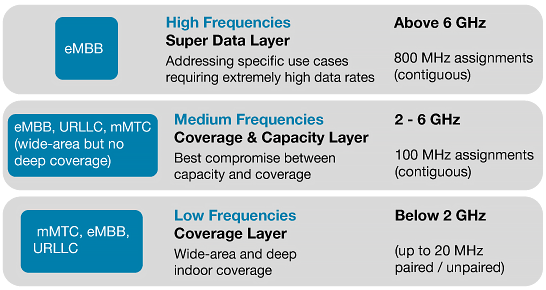Take the Poll | Join our Discussion
Introduction
5G, or fifth-generation wireless technology, is the next evolution of cellular technology, delivering higher speeds, lower latency, and a greater amount of simultaneous connections of multiple devices when compared to 4G. 5G uses the frequency spectrum ranging from a low of 450 Mhz to highs of 26 GHz and more. It plays an instrumental role in the Internet of Things, cyber-physical systems, edge computing, cloud computing, and many other applications. This article examines 5G technology and some of the demands it places on connector technology.
5G Technology and Connectors
5G is compliant with established 3GPP (3rd Generation Partnership Project) standards for network deployments and wireless communications. Millimeter wave (mmWave), small cells (miniature 5G cell towers), massive MIMO (multiple inputs, multiple outputs), beamforming, and other related technologies enable ultrafast 5G networks. 5G uses a higher population of small cells for enhanced speed and reliability, and an increased number of 5G base stations to provide seamless coverage.
Spectrum Allocation
As shown in Figure 1, 5G networks are allocated three ranges of the spectrum, each with its own advantages. The low frequencies (below 2 GHz) are able to cover a wide area, even indoors. Medium frequencies (2-6 GHz) deliver the best compromise between capacity and coverage, and include commonly seen frequencies such as 1500 MHz, 1800 MHz, 2.1 GHz, 2.3 GHz, 2.6 GHz, and the commercial 5G range, 3.3-3.8 GHz. High frequencies (>6 GHz), the Super Data Layer, solve specific use cases requiring extremely high data rates. Frequencies at the Super Data Layer can hit 60 Ghz and higher. The higher frequencies (from 24-40 Ghz) are referred to as mmWave, while Sub-6 refers to frequencies under 6 Ghz.
Figure 1: 5G Spectrum Bands allocated to 5G. Image Source: Belfuse
5G Connectors
Shop our wide variety of RF/Coaxial connectors for use in your 5G applications.
Don't forget to take our poll.
The Benefits of 5G over 4G
Some past flaws of 4G, such as a lack of coverage, poor performance at cell edges, and dropped calls are reduced or eliminated with 5G. 5G networks serve peak download rates of 20 gigabits per second and upload speeds of 10 gigabits per second, roughly ten times faster than 4G. 5G networks have a latency of one millisecond, compared to 50 milliseconds for 4G networks, opening up new possibilities for IoT devices that need fast reactions and speed. A spectral efficiency of 30 bits/s/Hz makes 5G networks twice as good as their predecessors.
Because the high frequencies of 5G have correspondingly smaller wavelengths, 5G networks use physically smaller antennas. Smaller antennas allow for the use of massive MIMO techniques, where base stations are equipped with a large number of small antennas, giving them the ability to serve multiple terminals simultaneously without requiring more frequency bandwidth. 5G antennas have less range, however, so more base stations will be required to provide the expected coverage. This has its own advantage: the increase in amount of antennas enables 5G to support 1,000 more devices per meter than 4G.
An added benefit of 5G is the flexibility that comes with network slicing. Network slicing divides a network connection into multiple virtual connections that are tailored to specific use cases. For example, self-driving cars require fast, low-latency connections, while an IoT device might not require high speed, because it transmits data in periodic bursts. Both can share the same network connection.
5G Applications
5G supports large-scale IoT deployments while maintaining sustainable energy consumption levels, device costs, network deployment, and operation costs. This large-scale IoT is known as the Massive Internet of Things, or MIoT. The ITU-R IMT-2020 specification (5G) include three major use case classes: Enhanced Mobile Broadband (eMBB), Massive Machine Type Communications (mMTC), and Ultra-Reliable and Low Latency Communications (URLLC). Figure 2 illustrates different scenarios for IMT-2020.
Figure 2: Usage scenarios of IMT-2020. Image Source: International Telecommunication Union
eMBB coverage supports much higher data rates, high user density, and extremely high traffic capacity in hotspot scenarios. Typical eMBB applications include UHD video (4K, 8K), 3D video, Tactile Internet, and remote classrooms. mMTC focuses on the IoT and specifies reduced power consumption and low data rates for machine-to-machine (M2M) communications. URLLC is necessary for mission-critical and safety-critical applications where extremely low latency and high reliability are required; examples include traffic safety and factory automation.
Disadvantages
The density of base stations must quadruple, because the range of 5G’s smaller antennas is much less than that of 4G antennas. Rolling out 5G infrastructure in urban areas will thus be significantly expensive.
5G Connectors
Increased bandwidth, higher speeds, higher density, and smaller sizes impose critical demands on RF connector technology, a key aspect in the design of an mmWave frequency system. The impedance of the connectors must match that of the entire transmission line, and at mmWave frequencies this becomes a challenge. Every consideration in the RF connector’s design and build is important, including electrical, mechanical, and environmental. Precision-designed RF connectors must transfer electromagnetic energy between transmission lines with minimal losses and reflections.
Impedance (usually 50 ohms), VSWR (Voltage Standing Wave Ratio), PIM (Passive Intermodulation Distortion), and maximum frequency are important specifications for RF connectors. VSWR is a crucial specification, especially at high frequencies; it measures the amount of an electro-magnetic wave that is reflected by a connector. VSWR varies with frequency, but can be kept constant throughout a certain frequency range. Mechanical properties such as engagement/disengagement forces, coupling nut torque, contact captivation, and endurance ensure a connection's stability.
Examples of High-Frequency Connectors Used in 5G
Cinch Connectivity Solutions for 5G comprises a complete set of 5G infrastructure-ready components. Connectors, adapters, and cable assemblies from Cinch's Johnson product line deliver quality data transmission for audio, video, and data applications. We'll go over a few of the products in more detail.
RF & Microwave Connectivity Solutions
Johnson has a large selection of 50-Ohm SMA connectors, available in various configurations, including PC board mount, End Launch, Bulkhead Flange mount, and cable mount. SMPM and SMP PCB surface mount Blind-mate connectors give exceptional RF performance up to 65 GHz. Contact and body materials meet the requirements of DSCC 94007, 94008, and MIL-STD-348.
SMA |
|
SMP |
|
SMPM |
|
Table 1: SMA, SMP, and SMPM features
Conclusion
5G’s high speeds, abundant bandwidth, and low latencies enable many applications in a variety of industries, including IoT, smart cities, autonomous driving, and more. 5G networks utilize high frequencies previously untapped with 4G; however, these frequencies have characteristics that present challenges to network and equipment design, including that of RF connectors. In order to support 5G frequencies, connectors must have optimal transmission specifications and maintain consistent impedance through their working range of frequencies, in addition to having stable and durable mechanics.
1.0mm Female Panel End Launch Connector | 1.85mm screw-on end launch connectors | 1.85mm Jack to 1.85mm Jack adapter |
|---|---|---|
149-0701-601 For More InformationFor More Information |
148-0801-301 For More InformationFor More Information |
148-0901-721 For More InformationFor More Information |
| 2.4mm RF Coaxial PC Mount Jack | 2.92mm Jack with 45 Degree PCB Mount | |
147-0701-251 For More InformationFor More Information | 145-0701-221 For More InformationFor More Information |












Top Comments